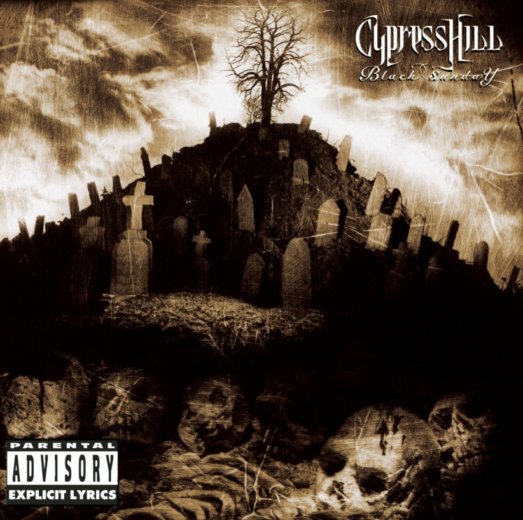When Cypress Hill members B-Real, Muggs and Sen Dog banned together in 1988 (and later Eric Bobo), they didn’t know they were creating a legacy. They thought-at most-they might make one or two albums and get some quick cash for the short term. Turns out the pro-marijuana, Spanglish slang spitting rappers from the West Coast would not only be successful but impact the culture of hip-hop for years to come. They would go on to break all sorts of records most notably being the first Latino American rap group to go platinum selling over 20 million albums worldwide.

July 20, 2018 marks the 25th anniversary of Cypress Hill’s groundbreaking second album, Black Sunday. The album rebuked any notion of the sophomore slump when it debuted at number one on the Billboard 200 in 1993, solidifying the band as a hip-hop mainstay. With their debut album still in the charts too, they became the first rap group to have two albums in the top 10 of the Billboard 200 simultaneously. Black Sunday was also notable for the crossover hit “Insane in the Brain,” which led the album to go triple platinum in the U.S. and sold about 3.25 million copies. On the eve of its 25th Anniversary ‘LLERO caught up with Sen Dog in between tour dates to reminisce on what made Black Sunday so different, the creative process behind it and the Cypress Hill legacy that lives on 30 years later.
On the direction and recording process…
Sen Dog:
“I think we didn’t have a direction. We just wanted to do something completely different from the first album. That’s the only direction we knew we wanted to not go in. Therefore, we had a wide open mentality for sounds and concepts of what could be. The field was wide open so we weren’t really trying to hold anybody back, or hold each other back in any way. We were just trying to be a little more different, maybe a little more weird, from our first album, so that was the mentality. It was just a free-flowing type of thing – we’d do songs and keep them, do some songs and get rid of them. It wasn’t a stressful session at all. It was a lot of marijuana and a lot of mushrooms during the recording of that record as I recall [laughs]. It was just a good time, we were like ‘wow we’re here, we made it, we had a good first album and now we’re making another one.’ We couldn’t believe we were making another album! So it was like a celebration kind of vibe. Just a bunch of friends coming by the studio and hang out, cheef out. All the Naughty [by Nature] dudes would come by, House of Pain, it was like a family kind of thing, great vibes. And we were all young, experiencing life so it was a great time to be in Cypress Hill.”
On the Creative Process for the hit single “Insane in the Brain”…
“Muggs had pre-made tracks he had been writing from when he was on break. So, when we got in the studio he already had that song, the music had already been recorded for it. I think B came up with the whole insane in the membrane thing, and I backed him up on it. So it was kind of a natural way for a hit song to come together. There’s not too many moving parts in that song, so everybody just did their role and did songs.”
On the Success of “Insane in the Brain”…
“We thought “Insane in the Brain” was going to be a great album track. Then we turned the record in and like a week later we got the managers and the label calling us up saying we want to go with this song first. And we’re like, ‘You mean the Insane song? That one? Really?’ And they were like ‘Yeah, that song is going to be big, you just don’t know.’ We thought we had stronger stuff, we thought our go to song on that album was going to be “Ain’t Going Out Like That.” As a band we thought that was our strongest song. But I guess the label and the guys that pick the songs to be singles heard something special in “Insane in the Brain” that not even the band heard. So, it turned out to be a monster, people still go crazy for that song today.”
Sen Dog drops some info on that infamous cannabis album sleeve, some behind the scenes moments and the critics after the jump…
